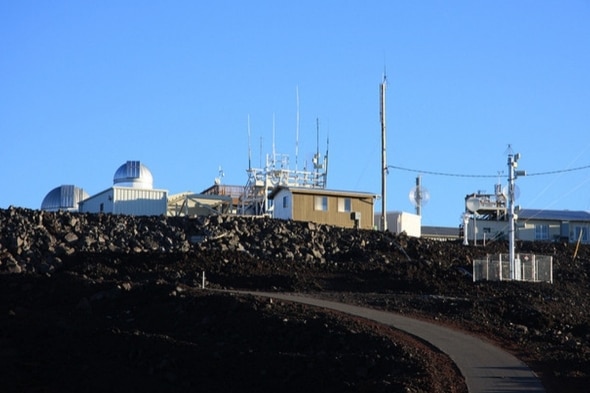OK. So the movie is actually 310 to Yuma but that is fiction and this is reality. That movie is violent and our weather is getting more so too as the climate gets warmer. It was once described to me how CO2 warms our planet. Emitting CO2 into the atmosphere is like putting a blanket around the earth. The more CO2, the thicker and warmer the blanket. And like a teapot of water on the stove with the heat turned up, the hotter the water gets the more steam is created. And sooner or later, the valve blows.
As indicated in the article below from Scientific American, the CO2 levels that are accumulating in the atmosphere are continuing to break historic levels and doing it much faster than has been expected or projected. That’s not surprising since the scientists tend to be cautious when they try to estimate what the future may be. Scientists don’t like to go out on a limb and then be wrong on the high side. They tend to be cautious so as not to be viewed as alarmists.
Nevertheless, here we are. And the prospects are pretty scary. I worry for my grandson and the other wildlife that inhabit this planet with us. Today’s kids are going to ask us one day when they grow up, “Grandpa, what the heck were you thinking back then????” And I regret that I will have to tell him that not enough people thought that this was a really big deal, especially the President that was elected in 2016.
We Just Breached the 410 PPM Threshold for CO2
Carbon dioxide has not reached this height in millions of years

The world just passed another round-numbered climate milestone. Scientists predicted it would happen this year and lo and behold, it has.
On Tuesday, the Mauna Loa Observatory recorded its first-ever carbon dioxide reading in excess of 410 parts per million (it was 410.28 ppm in case you want the full deal). Carbon dioxide hasn’t reached that height in millions of years. It’s a new atmosphere that humanity will have to contend with, one that’s trapping more heat and causing the climate to change at a quickening rate.
In what’s become a spring tradition like Passover and Easter, carbon dioxide has set a record high each year since measurements began. It stood at 280 ppm when record keeping began at Mauna Loa in 1958. In 2013, it passed 400 ppm. Just four years later, the 400 ppm mark is no longer a novelty. It’s the norm.
“Its pretty depressing that it’s only a couple of years since the 400 ppm milestone was toppled,” Gavin Foster, a paleoclimate researcher at the University of Southampton told Climate Central last month. “These milestones are just numbers, but they give us an opportunity to pause and take stock and act as useful yard sticks for comparisons to the geological record.”
Earlier this year, U.K. Met Office scientists issued their first-ever carbon dioxide forecast. They projected carbon dioxide could reach 410 ppm in March and almost certainly would by April. Their forecast has been borne out with Tuesday’s daily record. They project that the monthly average will peak near 407 ppm in May, setting a monthly record.
Carbon dioxide concentrations have skyrocketed over the past two years due to in part to natural factors like El Niño causing more of it to end up in the atmosphere. But it’s mostly driven by the record amounts of carbon dioxide humans are creating by burning fossil fuels.
“The rate of increase will go down when emissions decrease,” Pieter Tans, an atmospheric scientist at the National Oceanic and Atmospheric Administration, said. “But carbon dioxide will still be going up, albeit more slowly. Only when emissions are cut in half will atmospheric carbon dioxide level off initially.”
Even when concentrations of carbon dioxide level off, the impacts of climate change will extend centuries into the future. The planet has already warmed 1.8°F (1°C), including a run of 627 months in a row of above-normal heat. Sea levels have risen about a foot and oceans have acidified. Extreme heat has become more common.
All of these impacts will last longer and intensify into the future even if we cut carbon emissions. But we face a choice of just how intense they become based on when we stop polluting the atmosphere.
Right now we’re on track to create a climate unseen in 50 million years by mid-century.
This article is reproduced with permission from Climate Central. The article was first published on April 20, 2017.




